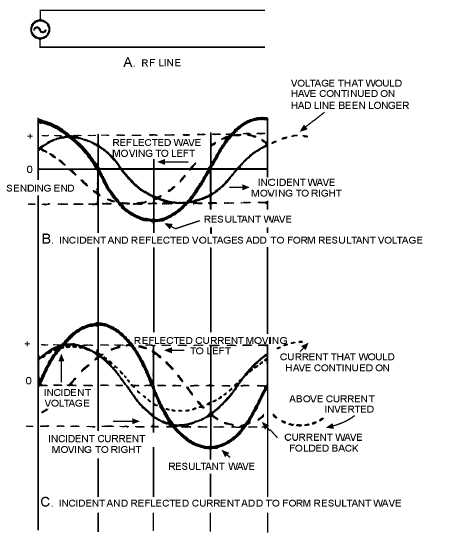3-32
REFLECTION OF AC VOLTAGE FROM AN OPEN CIRCUIT
In most cases where rf lines are used, the voltages applied to the sending end are ac voltages. The
action at the receiving end of the line is exactly the same for ac as for dc. In the open-ended line, shown in
figure 3-26, view A, the generated ac voltage is distributed along the line, shown in view B. This voltage
is distributed in such a way that as each instantaneous voltage arrives at the end, it is reflected with the
same polarity and amplitude. When ac is used, this reflection is in phase. Each of the reflected voltages
travels back along the line until it reaches the generator. If the generator impedance is the same as the line
impedance, energy arriving at the generator is absorbed and not reflected again. Now two voltages are on
the line.
Figure 3-26.—Formation of standing waves.
View B shows how two waves of the same frequency and amplitude moving in opposite directions
on the same conductor will combine to form a resultant wave. The small solid line is moving steadily
from left to right and is the INCIDENT WAVE (from the source). The broken-line waveform is moving
from right to left and is the REFLECTED WAVE. The resultant waveform, the heavy line, is found by
algebraically adding instantaneous values of the two waveforms. The resultant waveform has an

